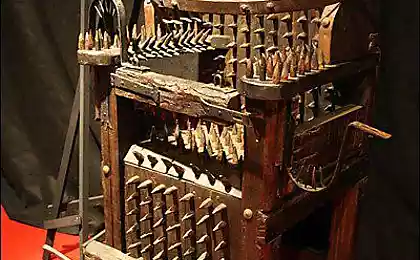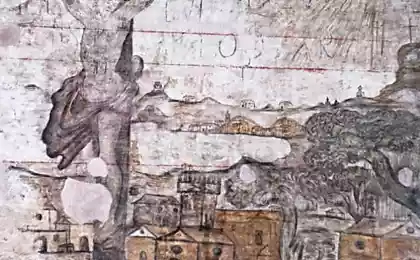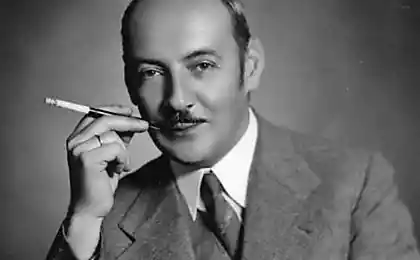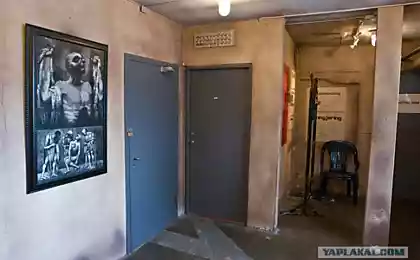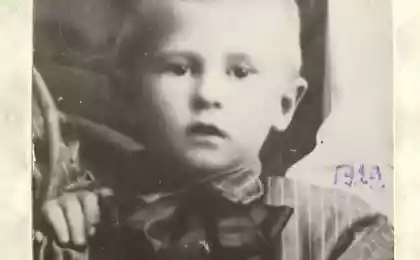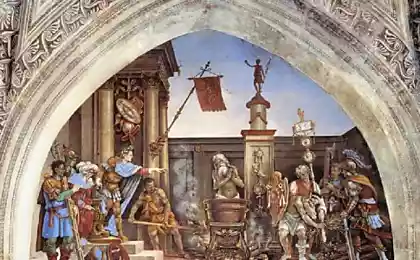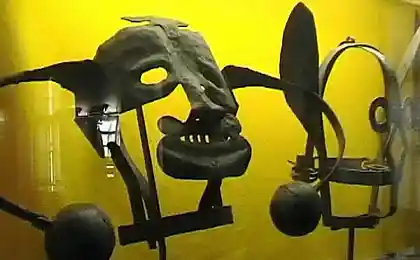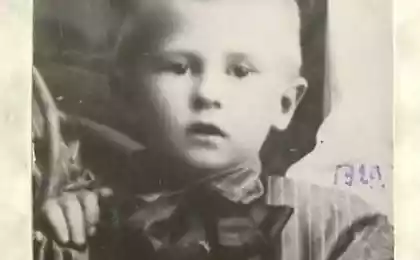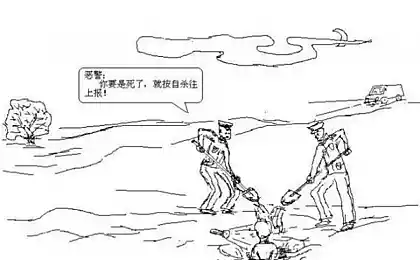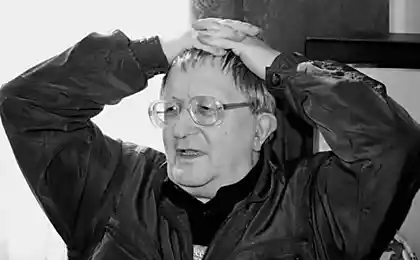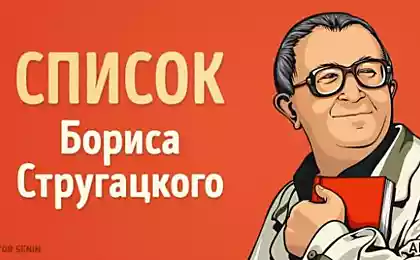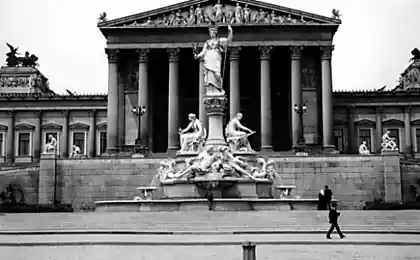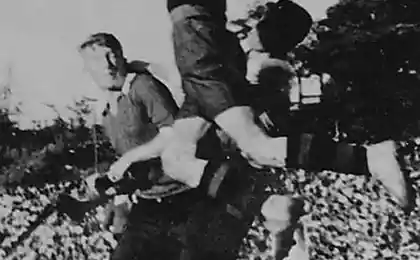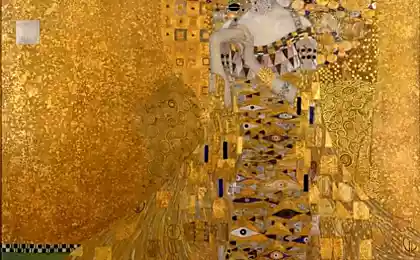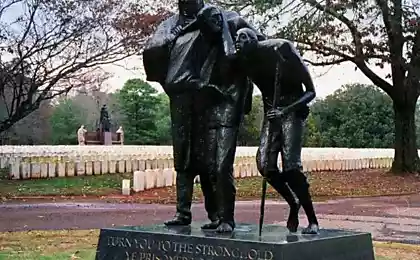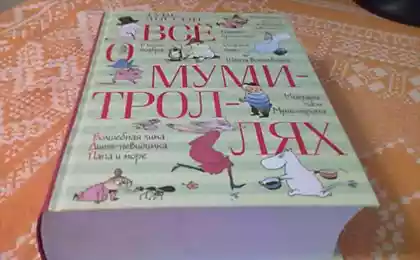3967
The torture of the Gestapo (25 photos)
It is a small neat house in Kristiansade next to the road in the port of Stavanger, and during the war was the most horrible place throughout the south of Norway. «Skrekkens hus» - «House of terror" - so named it in the city. Since January 1942, the city archives building was the headquarters of the Gestapo in southern Norway. These prisoners were brought here were equipped torture chambers, hence the people sent to concentration camps and shot.
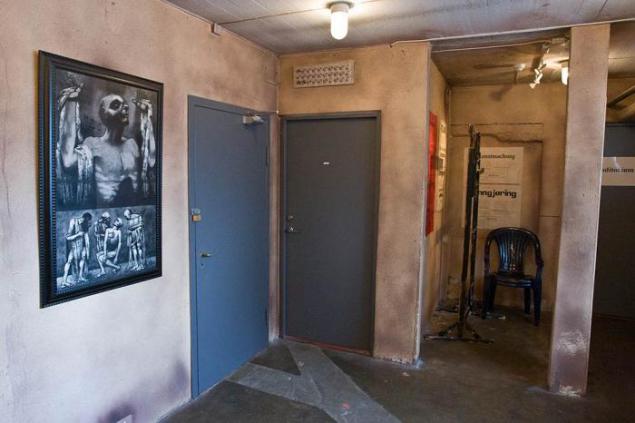
now in the basement of the building where the punishment cells were located and where prisoners were tortured, a museum, telling about what happened during the war in the building of State Archives.
Disposition of the basement corridors left unchanged. There were only new lights and doors. In the main corridor of the main exhibition is arranged with archival materials, photographs, posters.
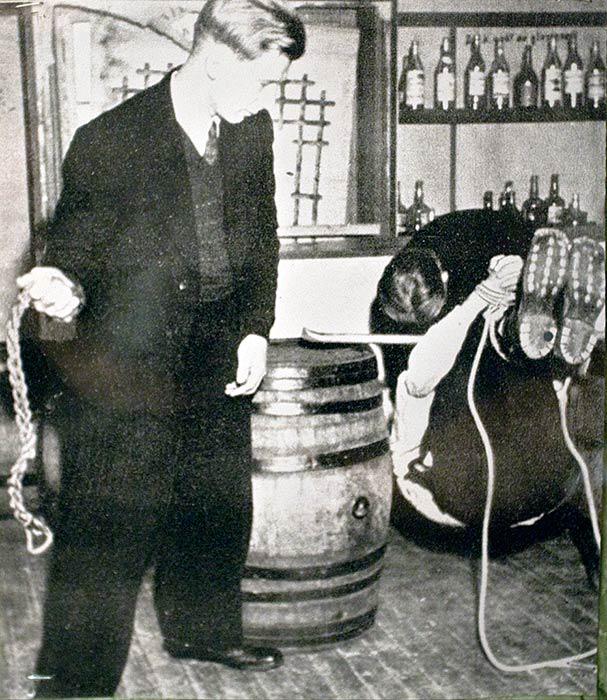
So suspended beaten arrested chain.
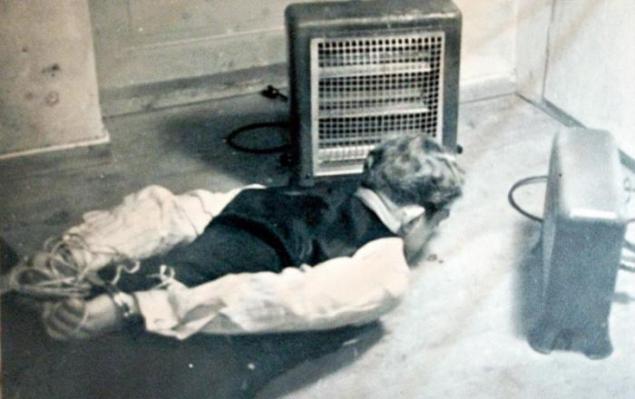
So tortured with electric stoves. With particular zeal of the executioners could ignite a human hair on the head.
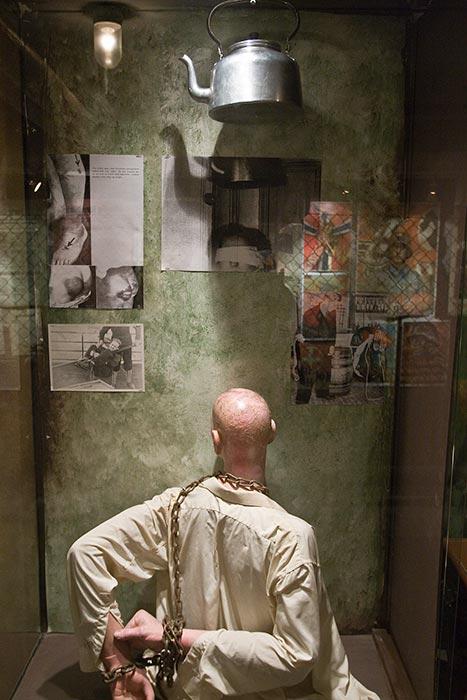
About water torture I wrote earlier. It is applied in the Archives.
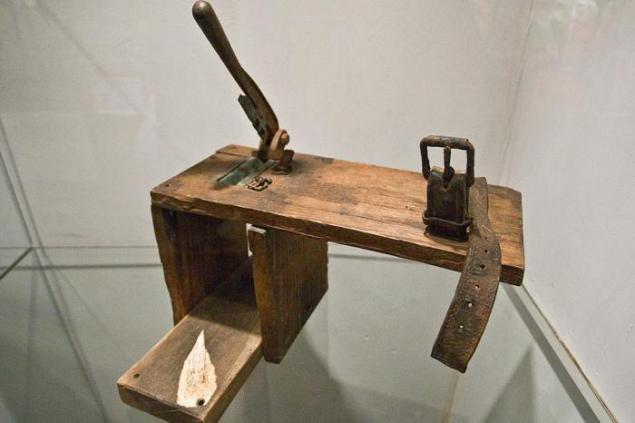
In this device, finger crimp pulled out nails. The machine authentic - after the city's liberation from the Germans all the equipment torture chambers remained in place and was saved.
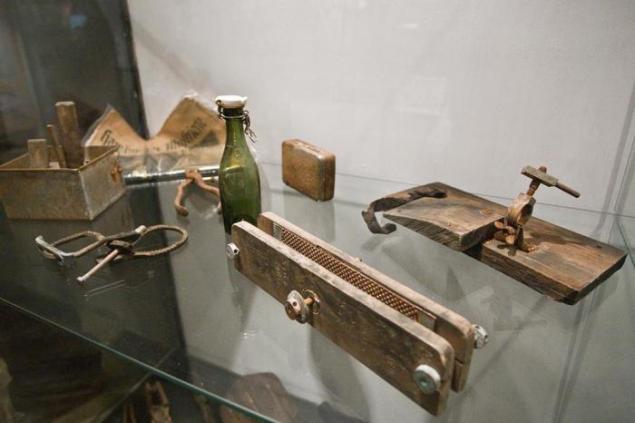
Next - other devices for interrogation with the "addiction».
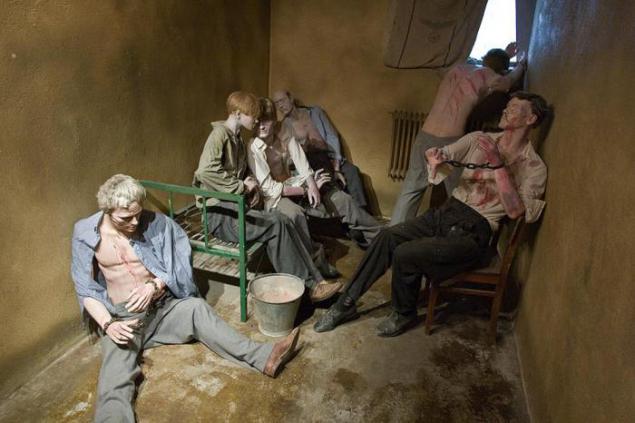
Several basements are arranged reconstruction - as it looked then, in this very spot. This camera, which contained extremely dangerous detainees - trapped in the clutches of the Gestapo member of the Norwegian Resistance.
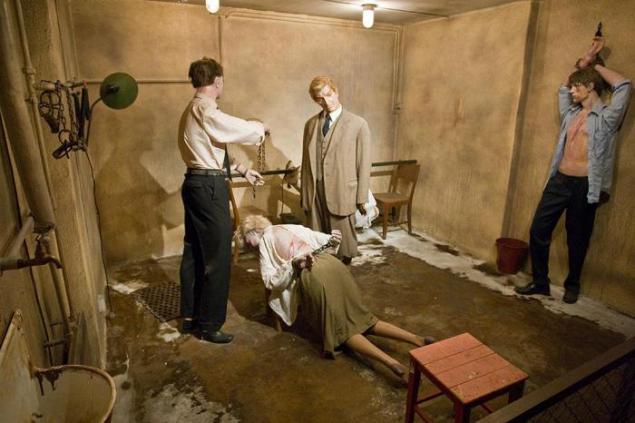
In the next room was located a torture chamber. It reproduced the actual scene of torture couples underground, taken by the Gestapo in 1943, during the session with the intelligence center in London. Two Gestapo tortured his wife in front of her husband, chained to the wall. In a corner, on an iron girder, suspended one member of an underground group failed. They say that before the interrogation the Gestapo pumped alcohol and drugs.

In all cell left, as if a 43-m. If you turn the pink stool, standing at the feet of the women, you can see the mark of the Gestapo Kristiansand.
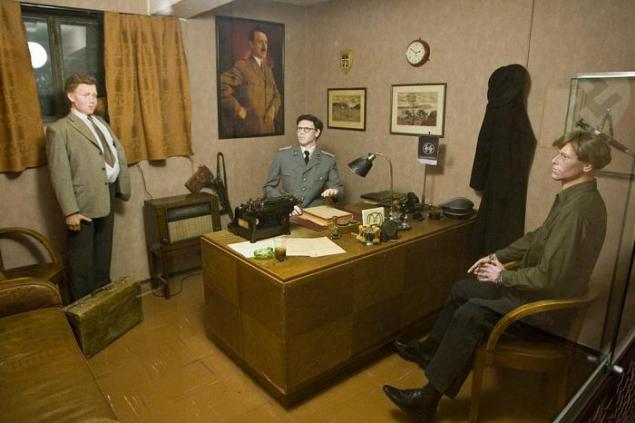
This reconstruction of the interrogation - Gestapo agent provocateur (left) presents arrested clandestine radio operator group (it sits right in handcuffs) his radio in a suitcase. In the center sits kristiansandskogo chief of the Gestapo, SS-Hauptsturmführer Rudolf Kerner - about it I had to tell.
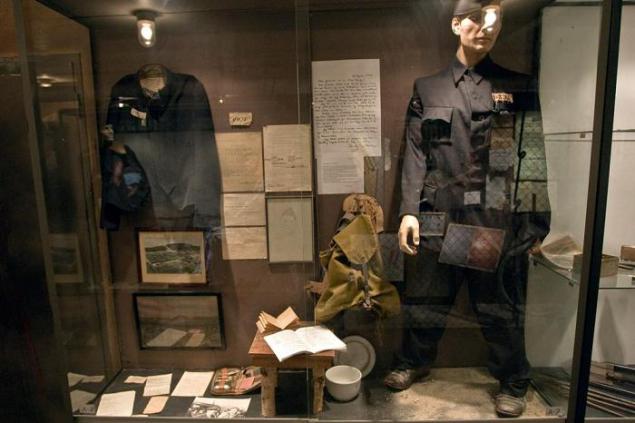
In this showcase items and documents of the Norwegian patriots, which is sent to a concentration camp near Oslo Greene - Chief forwarding station in Norway, where the prisoners were sent to other concentration camps in Europe.
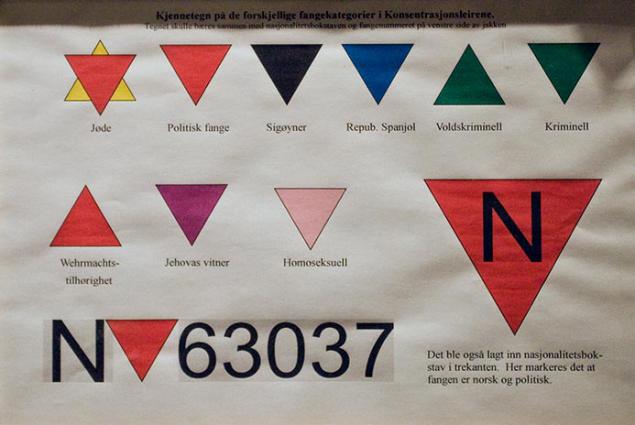
Notation of different groups of prisoners in the Auschwitz concentration camp (Auschwitz-Birkenau). The Jew, the political, the Roma, the Spanish Republican, a dangerous criminal, a criminal, a war criminal, a Jehovah's Witness, homosexual. The icon of Norwegian political prisoner wrote the letter N.
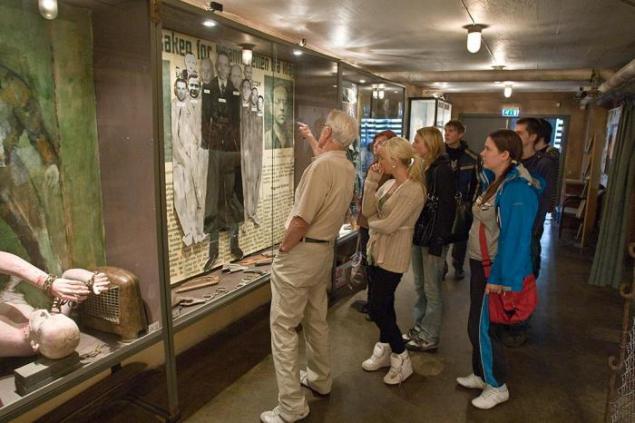
The museum lead school tours. I came across one such - a few local teenagers walked the corridors together with the Tour Robstadom, volunteers from local residents who survived the war. They say that in the year in the Archives of the museum is visited by about 10,000 students.
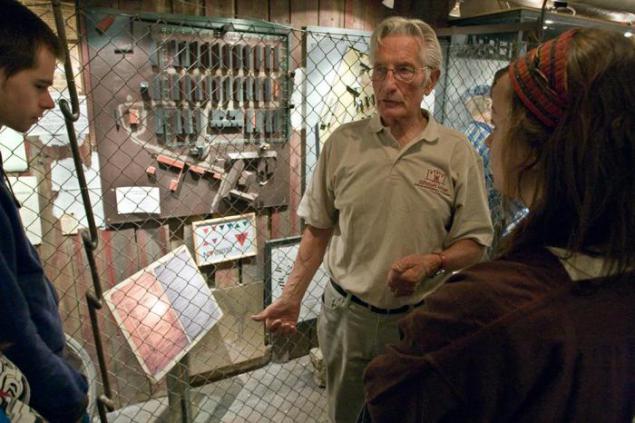
Toure told the guys about Auschwitz. Two boys from the group had been there recently on a tour.
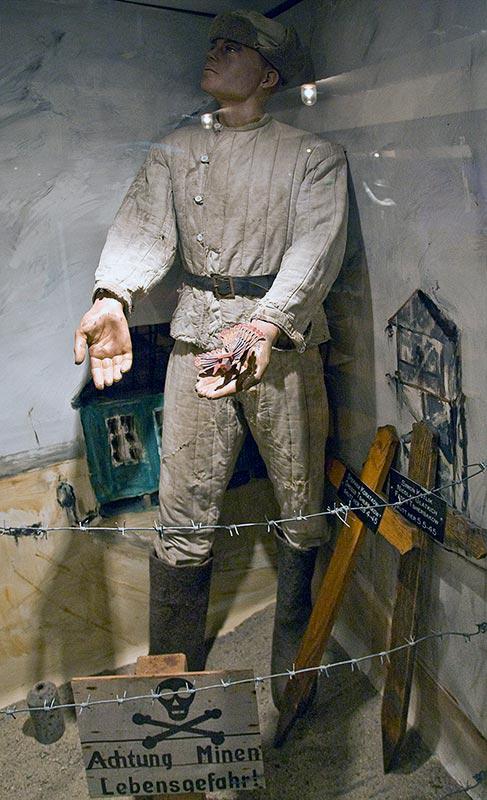
Soviet prisoners of war in a concentration camp. In his hand - a home-made wooden bird.
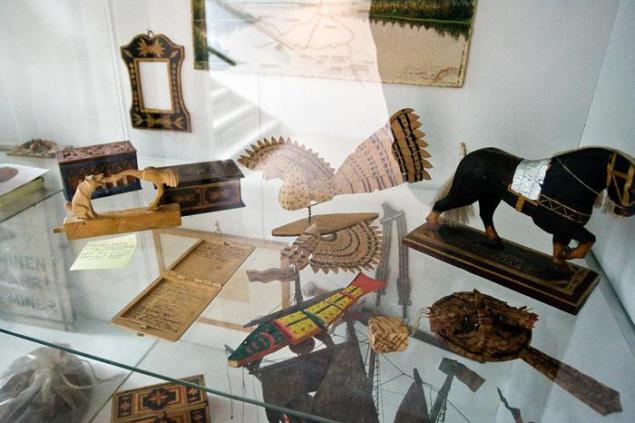
In a separate showcase things made by hands of Russian prisoners of war in the Norwegian camps. These crafts Russian bartered for food from the locals. Our neighbor in Kristiansand was a whole collection of wooden birds - on the way to school, she often met our group of prisoners going to work under guard, and gave them their breakfast in exchange for the carved wooden toys.
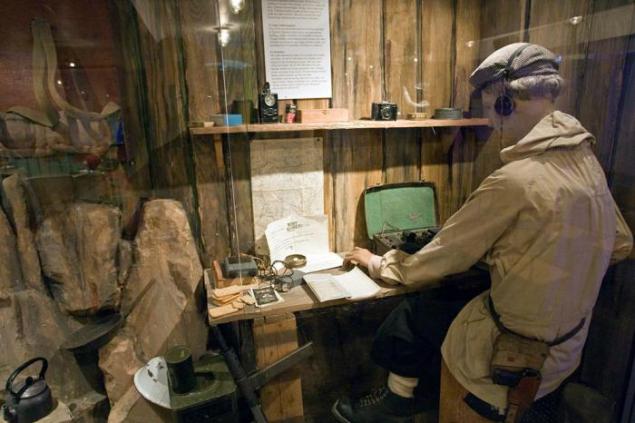
Reconstruction of guerrilla radio. Guerrillas in southern Norway to London passed information about German troop movements, deployment of military equipment and vehicles. In the north of the Norwegian intelligence supplied the Soviet Northern Navy.
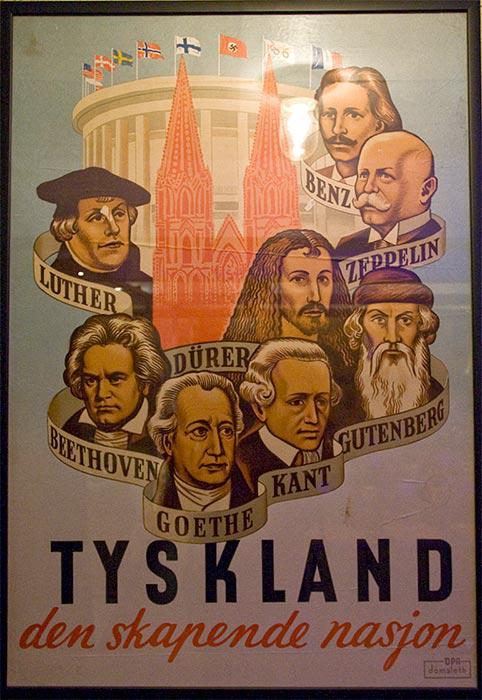
"Germany - a nation of creators."
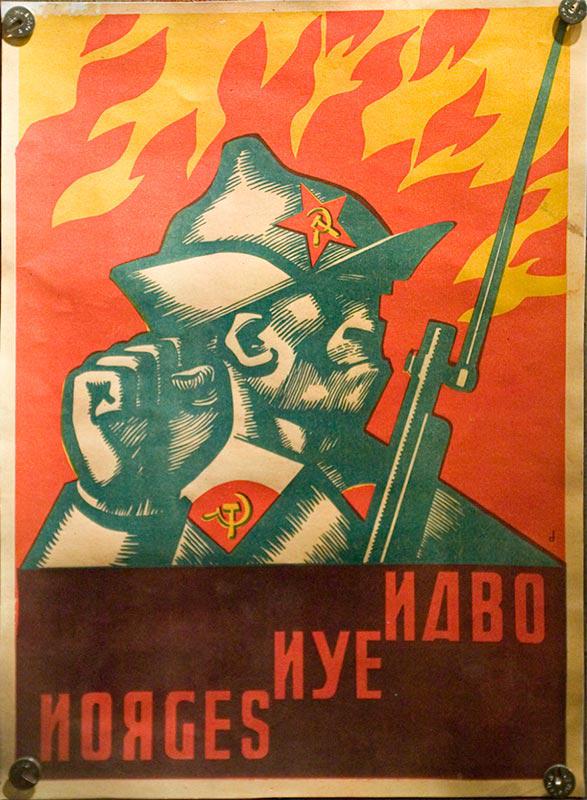
Norwegian patriots had to work under extreme pressure on the local population Goebbels's propaganda. The Germans have set ourselves the task of early nazification country. Quisling government is taking to this effort in the field of education, culture and sport. Quisling Nazi Party (Nasjonal Samling) before the start of the war inspired the Norwegians that the main threat to their security is the military power of the Soviet Union. It should be noted that intimidation of Norwegians about Soviet aggression in the north contributed to many Finnish campaign in 1940. With the advent of Quisling has only strengthened their propaganda with the help of agencies Goebbels. The Nazis in Norway to convince the population that only a strong Germany could protect the Norwegians from the Bolsheviks.
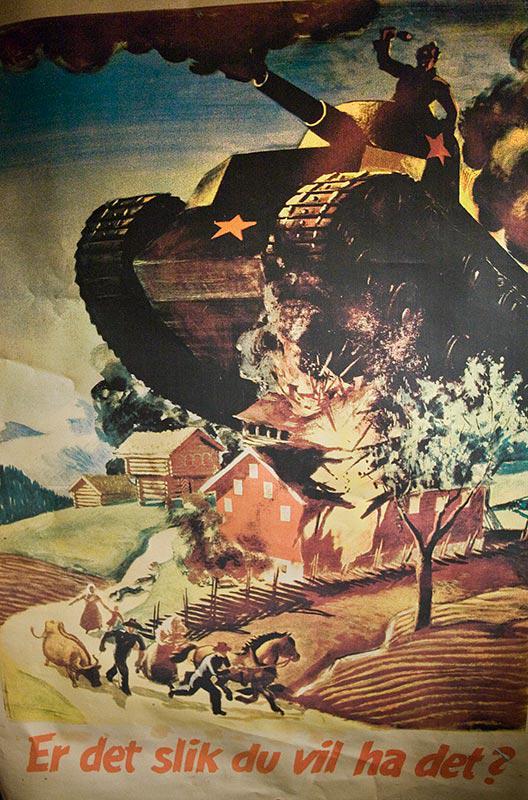
Several posters distributed by the Nazis in Norway. «Norges nye nabo» - «New Norwegian neighbor", 1940 Note the fashionable and now welcome "inversion" of Latin letters to simulate the Cyrillic alphabet.
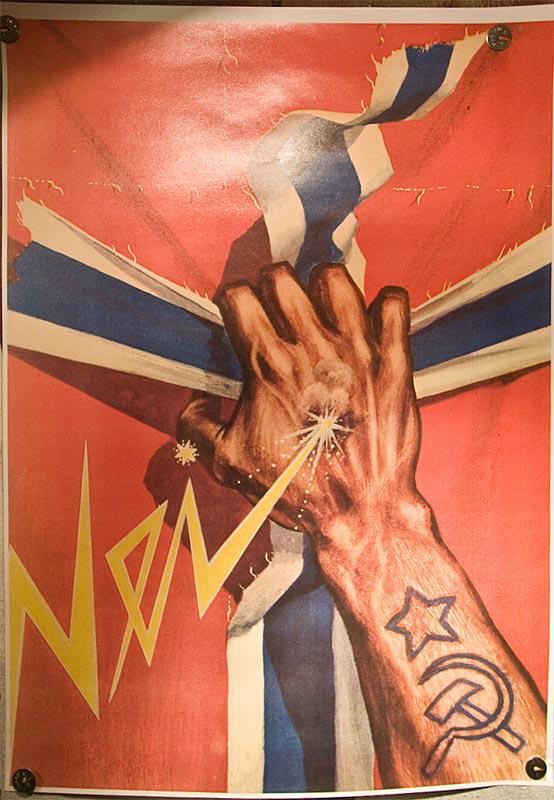
"You want it to be so?»
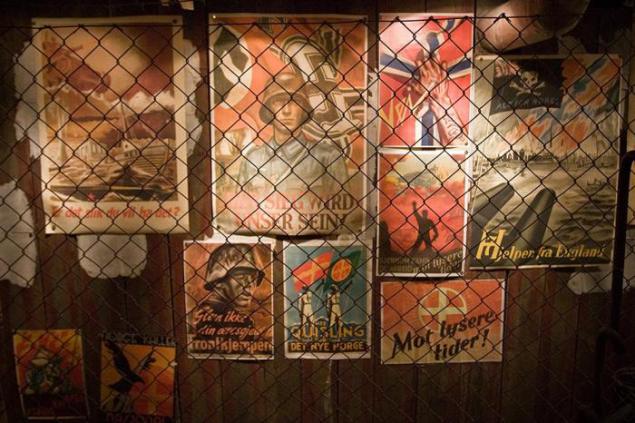
The promotion of a "new Norwegian" strongly emphasizes the relationship of the two "Nordic" peoples, their solidarity in the struggle against British imperialism and "wild Bolshevik hordes". Norwegian patriots in response to use in their fight against the character of King Haakon and his image. The motto of the King «Alt for Norge» strongly ridiculed the Nazis who inspired the Norwegians that the military difficulties - a temporary phenomenon, and Vidkun Quisling - the new leader of the nation.
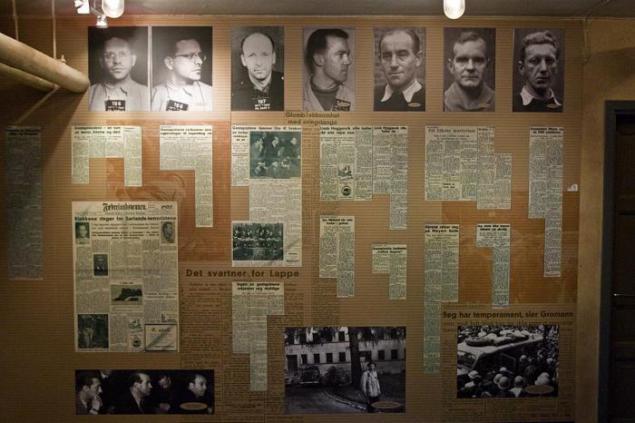
Two walls in the dark corridors of the museum given to the criminal case, which was tried on seven main Gestapo in Kristiansand. The Norwegian jurisprudence of such cases has never been - the Norwegians tried Germans and citizens of another state, accused of crimes in the territory of Norway. The process involved three hundred witnesses, about a dozen lawyers, the Norwegian and foreign press. Gestapo officers were tried for the torture and abuse of detainees, was alone episode of the execution without trial of 30 Russian and Polish prisoners of war 1. June 16, 1947 were all sentenced to death for the first time and was temporarily included in the Criminal Code of Norway after the war.
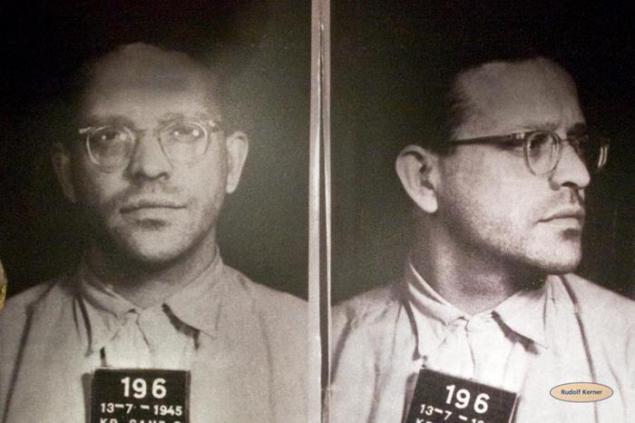
Rudolf Kerner - kristiansandskogo Gestapo chief. A former teacher of shoemaking. Notorious sadist in Germany had a criminal past. Went to camp a few hundred members of the Norwegian resistance, is guilty of the death of the organization disclosed Gestapo Soviet prisoners of war in a concentration camp in the south of Norway. It was, like the rest of his accomplices, was sentenced to death, which was later commuted to life imprisonment. He was released in 1953 under an amnesty announced by the Norwegian government. He went to Germany, where his traces were lost.
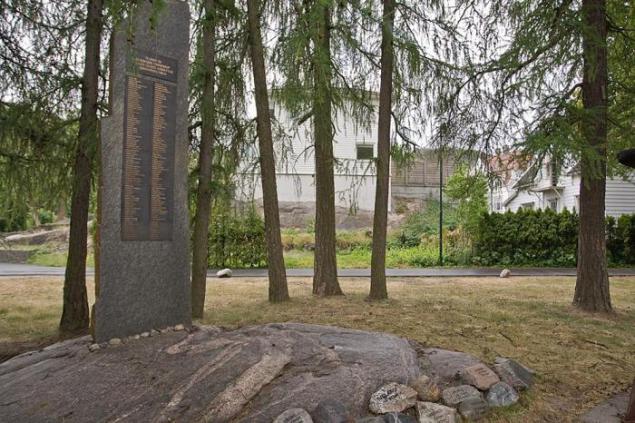
Next to the archive building is a modest monument to those killed at the hands of the Gestapo Norwegian patriots. At the local cemetery, napodaleku from this place, lie the remains of Soviet prisoners of war, and British pilots shot down by the Germans in the skies over Kristiansand. Every year on May 8 at the flagpoles near the graves are raised flags of the USSR, the United Kingdom and Norway.
In 1997, the archive building, from which the State Archives moved to another location, it was decided to sell to private hands. Local veterans, public organizations were strongly opposed, to organize a special committee, and have achieved that in 1998 the owner of the building State Concern Statsbygg passed a historic building veterans committee. Now, here at the same museum, about which I have told you, the offices of the Norwegian and international humanitarian organizations - the Red Cross, Amnesty International, the United Nations.
- Photos: drugoi
drugoi.livejournal.com

now in the basement of the building where the punishment cells were located and where prisoners were tortured, a museum, telling about what happened during the war in the building of State Archives.
Disposition of the basement corridors left unchanged. There were only new lights and doors. In the main corridor of the main exhibition is arranged with archival materials, photographs, posters.

So suspended beaten arrested chain.

So tortured with electric stoves. With particular zeal of the executioners could ignite a human hair on the head.

About water torture I wrote earlier. It is applied in the Archives.

In this device, finger crimp pulled out nails. The machine authentic - after the city's liberation from the Germans all the equipment torture chambers remained in place and was saved.

Next - other devices for interrogation with the "addiction».

Several basements are arranged reconstruction - as it looked then, in this very spot. This camera, which contained extremely dangerous detainees - trapped in the clutches of the Gestapo member of the Norwegian Resistance.

In the next room was located a torture chamber. It reproduced the actual scene of torture couples underground, taken by the Gestapo in 1943, during the session with the intelligence center in London. Two Gestapo tortured his wife in front of her husband, chained to the wall. In a corner, on an iron girder, suspended one member of an underground group failed. They say that before the interrogation the Gestapo pumped alcohol and drugs.

In all cell left, as if a 43-m. If you turn the pink stool, standing at the feet of the women, you can see the mark of the Gestapo Kristiansand.

This reconstruction of the interrogation - Gestapo agent provocateur (left) presents arrested clandestine radio operator group (it sits right in handcuffs) his radio in a suitcase. In the center sits kristiansandskogo chief of the Gestapo, SS-Hauptsturmführer Rudolf Kerner - about it I had to tell.

In this showcase items and documents of the Norwegian patriots, which is sent to a concentration camp near Oslo Greene - Chief forwarding station in Norway, where the prisoners were sent to other concentration camps in Europe.

Notation of different groups of prisoners in the Auschwitz concentration camp (Auschwitz-Birkenau). The Jew, the political, the Roma, the Spanish Republican, a dangerous criminal, a criminal, a war criminal, a Jehovah's Witness, homosexual. The icon of Norwegian political prisoner wrote the letter N.

The museum lead school tours. I came across one such - a few local teenagers walked the corridors together with the Tour Robstadom, volunteers from local residents who survived the war. They say that in the year in the Archives of the museum is visited by about 10,000 students.

Toure told the guys about Auschwitz. Two boys from the group had been there recently on a tour.

Soviet prisoners of war in a concentration camp. In his hand - a home-made wooden bird.

In a separate showcase things made by hands of Russian prisoners of war in the Norwegian camps. These crafts Russian bartered for food from the locals. Our neighbor in Kristiansand was a whole collection of wooden birds - on the way to school, she often met our group of prisoners going to work under guard, and gave them their breakfast in exchange for the carved wooden toys.

Reconstruction of guerrilla radio. Guerrillas in southern Norway to London passed information about German troop movements, deployment of military equipment and vehicles. In the north of the Norwegian intelligence supplied the Soviet Northern Navy.

"Germany - a nation of creators."

Norwegian patriots had to work under extreme pressure on the local population Goebbels's propaganda. The Germans have set ourselves the task of early nazification country. Quisling government is taking to this effort in the field of education, culture and sport. Quisling Nazi Party (Nasjonal Samling) before the start of the war inspired the Norwegians that the main threat to their security is the military power of the Soviet Union. It should be noted that intimidation of Norwegians about Soviet aggression in the north contributed to many Finnish campaign in 1940. With the advent of Quisling has only strengthened their propaganda with the help of agencies Goebbels. The Nazis in Norway to convince the population that only a strong Germany could protect the Norwegians from the Bolsheviks.

Several posters distributed by the Nazis in Norway. «Norges nye nabo» - «New Norwegian neighbor", 1940 Note the fashionable and now welcome "inversion" of Latin letters to simulate the Cyrillic alphabet.

"You want it to be so?»

The promotion of a "new Norwegian" strongly emphasizes the relationship of the two "Nordic" peoples, their solidarity in the struggle against British imperialism and "wild Bolshevik hordes". Norwegian patriots in response to use in their fight against the character of King Haakon and his image. The motto of the King «Alt for Norge» strongly ridiculed the Nazis who inspired the Norwegians that the military difficulties - a temporary phenomenon, and Vidkun Quisling - the new leader of the nation.

Two walls in the dark corridors of the museum given to the criminal case, which was tried on seven main Gestapo in Kristiansand. The Norwegian jurisprudence of such cases has never been - the Norwegians tried Germans and citizens of another state, accused of crimes in the territory of Norway. The process involved three hundred witnesses, about a dozen lawyers, the Norwegian and foreign press. Gestapo officers were tried for the torture and abuse of detainees, was alone episode of the execution without trial of 30 Russian and Polish prisoners of war 1. June 16, 1947 were all sentenced to death for the first time and was temporarily included in the Criminal Code of Norway after the war.

Rudolf Kerner - kristiansandskogo Gestapo chief. A former teacher of shoemaking. Notorious sadist in Germany had a criminal past. Went to camp a few hundred members of the Norwegian resistance, is guilty of the death of the organization disclosed Gestapo Soviet prisoners of war in a concentration camp in the south of Norway. It was, like the rest of his accomplices, was sentenced to death, which was later commuted to life imprisonment. He was released in 1953 under an amnesty announced by the Norwegian government. He went to Germany, where his traces were lost.

Next to the archive building is a modest monument to those killed at the hands of the Gestapo Norwegian patriots. At the local cemetery, napodaleku from this place, lie the remains of Soviet prisoners of war, and British pilots shot down by the Germans in the skies over Kristiansand. Every year on May 8 at the flagpoles near the graves are raised flags of the USSR, the United Kingdom and Norway.
In 1997, the archive building, from which the State Archives moved to another location, it was decided to sell to private hands. Local veterans, public organizations were strongly opposed, to organize a special committee, and have achieved that in 1998 the owner of the building State Concern Statsbygg passed a historic building veterans committee. Now, here at the same museum, about which I have told you, the offices of the Norwegian and international humanitarian organizations - the Red Cross, Amnesty International, the United Nations.
- Photos: drugoi
drugoi.livejournal.com

